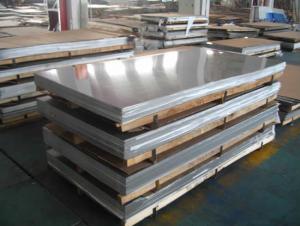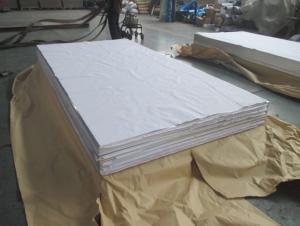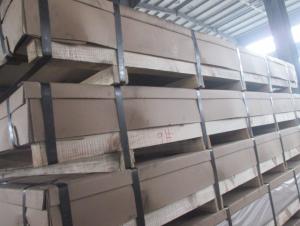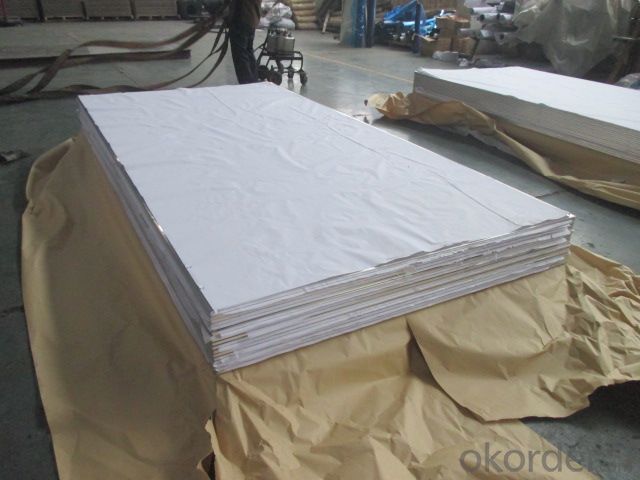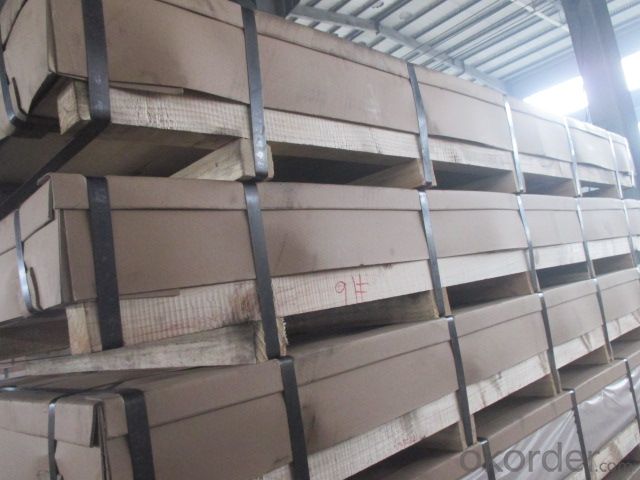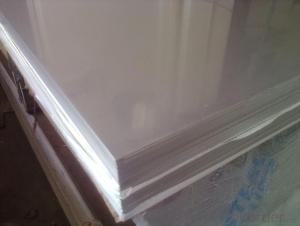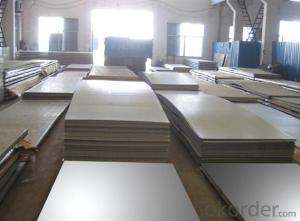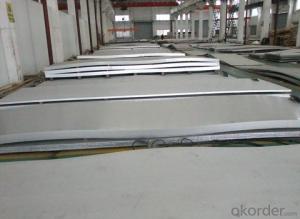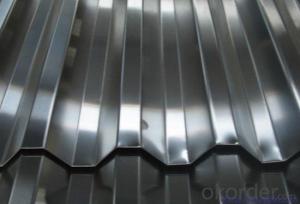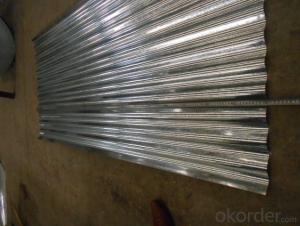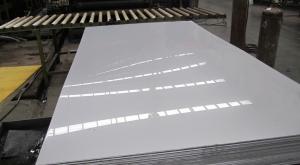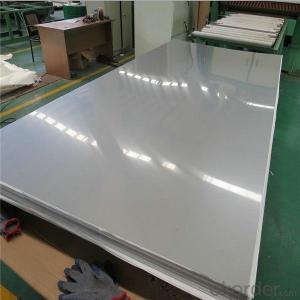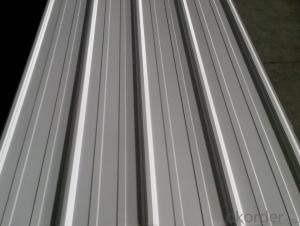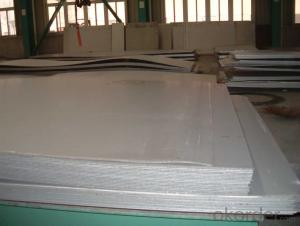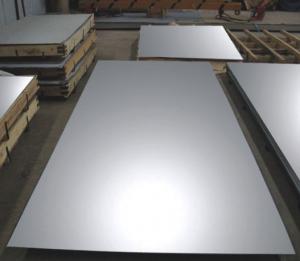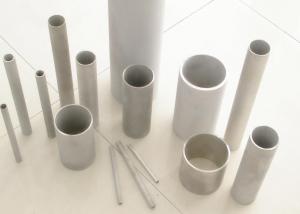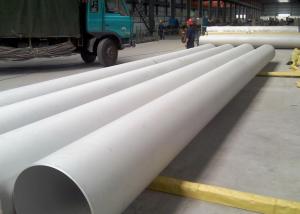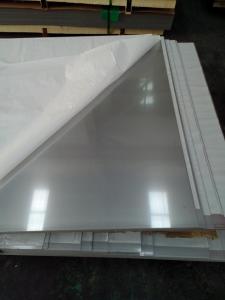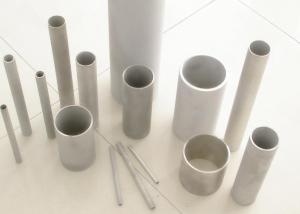Stainless Steel Sheet In Cheapest Price Stocks
- Loading Port:
- Shanghai
- Payment Terms:
- TT or LC
- Min Order Qty:
- 4 kg
- Supply Capability:
- 2000 kg/month
OKorder Service Pledge
OKorder Financial Service
You Might Also Like
1.Structure of Product Description
Cold rolled aluminum sheet is widely used in the field of construction field and decoration field, etc.
There are many different grad and alloy number and else graes are in the fields ,
ades, such as: 1000 series, 2000 series, 3000 series, 5052,5754,5083,6061,6063,8011, etc.
The temper is include H14, H22, H24, H44,H112,H114,etc.
2. Main features of the product
a.Competitive price
b.Frist-Class Service.
c. Shortest service.
3. Image.
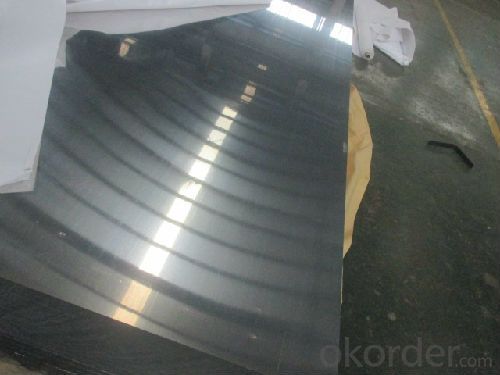
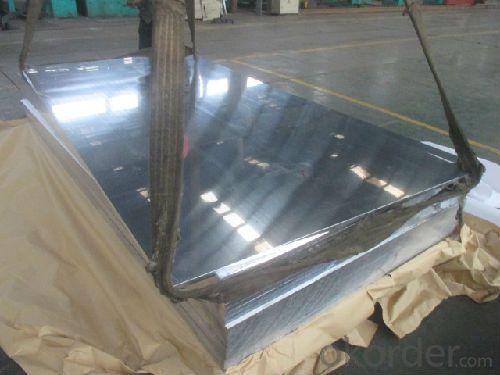
4. Product detailed sizes:
1000mm*2000mm, 1219mm*24381220mm*2440mm,
800*800,700*700,900*900,
1250mm*2500mm,1500mm*3000mm, etc.
5. FAQ:
What is the quality standard?
---Usually our standard is GB3880-2006 or others.
What is the width range?
---It is from 100 to 2500mm, etc.
---Normally it is around 9000 tons totally.
Where is your client from?
---Normally it is from Japan, USA, ENGLISH, SINGAPORE, ETC.
What is your mainly products?
---Normally they are aluminum sheet, checkered sheet, mirror finish aluminium sheet, aluminum casting coil, etc.
- Q: How do you remove stains or marks from stainless steel sheets?
- To remove stains or marks from stainless steel sheets, you can start by wiping the surface with a soft cloth or sponge dipped in a mixture of warm water and mild dish soap. Gently scrub the affected area in the direction of the grain, then rinse with clean water and dry thoroughly. For tougher stains, you can apply a paste of baking soda and water, leave it on for a few minutes, and then scrub gently before rinsing and drying. Avoid using abrasive cleaners or scrub brushes that can scratch the stainless steel surface.
- Q: Can stainless steel sheets be used for medical sterilization equipment?
- Yes, stainless steel sheets can indeed be used for medical sterilization equipment. Stainless steel is a popular material choice in the medical industry due to its excellent resistance to corrosion, high heat resistance, and durability. These features make stainless steel sheets ideal for various medical applications, including the construction of sterilization equipment. Stainless steel sheets can withstand high temperatures and repeated sterilization cycles without warping or degrading, making them suitable for autoclaves and other sterilization devices. Additionally, stainless steel is easy to clean and maintain, which is crucial for preventing the growth of bacteria or other harmful microorganisms. Thus, stainless steel sheets are commonly used in medical settings where sterilization equipment is required.
- Q: Are stainless steel sheets suitable for water tanks?
- Yes, stainless steel sheets are suitable for water tanks. Stainless steel is highly resistant to corrosion and rust, making it an ideal material for water storage. It is durable, long-lasting, and can withstand high water pressures. Additionally, stainless steel is hygienic, easy to clean, and does not contaminate the water.
- Q: What is called anti fingerprint stainless steel sheet?
- The utility model improves the influence of fingerprints or oil pollution in the use of stainless steel products, and solves the difficult problem that the surface is easy to stick dirt and is difficult to clean. Meanwhile, the utility model avoids the defects of stainless steel surface damage, blackening or losing luster caused by the treatment of fingerprints or oil pollution by common chemical solvents. This is a new type of stainless steel surface processing technology, stainless steel material is not limited: such as 201#, 202#, 301#, 304#, 430#, 443# and so on can be processed!
- Q: How do I clean and maintain stainless steel sheets?
- To clean and maintain stainless steel sheets, start by wiping them down with a mild soap and water solution or a non-abrasive cleaner. Rinse thoroughly and dry with a clean cloth to prevent water spots. Avoid using harsh chemicals, abrasive sponges, or steel wool as they can damage the surface. For tougher stains or fingerprints, you can use a vinegar and water solution or specialized stainless steel cleaners. Finally, regularly polish the sheets with a stainless steel cleaner or olive oil to restore their shine and protect against future stains.
- Q: Can stainless steel sheets be used for soundproofing?
- Stainless steel sheets alone are not typically used for soundproofing purposes. While stainless steel is known for its durability and corrosion resistance, it does not possess significant soundproofing properties. However, stainless steel sheets can be incorporated into soundproofing systems as part of a composite structure or in conjunction with other soundproofing materials to enhance their overall effectiveness.
- Q: Can stainless steel sheets be used for athletic equipment?
- Yes, stainless steel sheets can be used for athletic equipment. Stainless steel is known for its durability, corrosion resistance, and strength, making it an ideal material for various athletic equipment applications. It is commonly used in the construction of gym equipment such as weightlifting bars, dumbbells, and exercise benches. Stainless steel sheets are also used to manufacture basketball hoops, soccer goalposts, and other outdoor sports equipment due to their ability to withstand harsh weather conditions. Additionally, stainless steel sheets can be customized and fabricated into different shapes and sizes, making them versatile for various athletic equipment needs.
- Q: Are stainless steel sheets suitable for architectural mesh applications?
- Architectural mesh applications greatly benefit from the use of stainless steel sheets. This material is incredibly versatile and durable, offering a multitude of advantages for architectural purposes. With its resistance to corrosion, stainless steel is indispensable for long-lasting performance in outdoor and high-moisture environments. Moreover, its exceptional strength enables it to withstand heavy loads, making it an ideal choice for structural applications. The utilization of stainless steel sheets in architectural mesh brings together functionality and aesthetics in a unique manner. This mesh can be employed in various ways, such as facades, cladding, sunshades, balustrades, and partitions. It can be woven or welded into diverse patterns and shapes, allowing for imaginative and visually appealing designs. Furthermore, stainless steel architectural mesh provides excellent transparency and airflow, making it suitable for applications requiring ventilation or light transmission. It enhances the visual appeal of a building by creating a sense of openness, while simultaneously ensuring privacy and security. Additionally, stainless steel offers a high level of customization. It can be finished in different colors and surface textures, providing architects and designers with the opportunity to achieve their desired aesthetic. Additionally, stainless steel is a sustainable material, as it is fully recyclable and has a long lifespan, minimizing the environmental impact of architectural projects. In summary, stainless steel sheets are an excellent choice for architectural mesh applications due to their corrosion resistance, strength, versatility, and aesthetic appeal. They grant architects and designers a wide range of possibilities to create visually striking and functional structures.
- Q: Are stainless steel sheets resistant to acids?
- Yes, stainless steel sheets are resistant to acids. Stainless steel is known for its corrosion resistance, and this resistance extends to acids as well. The chromium content in stainless steel forms a protective layer, known as a passive film, that prevents the metal from reacting with acids. This passive film acts as a barrier, making stainless steel sheets highly resistant to a wide range of acids, including both organic and inorganic acids. However, it is important to note that the level of resistance can vary depending on the grade and composition of the stainless steel. Some grades, such as 304 and 316, are particularly resistant to acids, making them suitable for various applications in industries such as chemical processing, food processing, and pharmaceuticals. Nonetheless, even with their resistance to acids, stainless steel sheets may still be susceptible to certain aggressive acids or prolonged exposure to highly corrosive environments. Therefore, it is essential to consult with experts and choose the appropriate grade of stainless steel for specific acid-resistant applications.
- Q: How do I determine the flatness of stainless steel sheets?
- To determine the flatness of stainless steel sheets, you can follow these steps: 1. Visual Inspection: Start by visually inspecting the sheet for any visible signs of warping, bending, or unevenness. Look for any noticeable waves, ripples, or twists in the surface. While this method may not be the most accurate, it can give you an initial idea of the sheet's overall flatness. 2. Measuring with a Straight Edge: Place a straight edge, such as a ruler or a long level, on the surface of the stainless steel sheet. Move the straight edge across different areas of the sheet, focusing on both the center and the edges. Observe if there are any gaps or spaces between the straight edge and the sheet. If the straight edge remains in full contact with the sheet throughout, it indicates a good level of flatness. 3. Using a Feeler Gauge: A feeler gauge is a precision measurement tool consisting of a set of thin metal blades of varying thicknesses. It can be used to measure the gap between the straight edge and the stainless steel sheet more accurately. Slide the feeler gauge into any gaps between the sheet and the straight edge, noting the blade thickness that fits snugly. This will help determine the extent of any unevenness or bowing present. 4. Laser Measurement: For more precise measurements, you can use a laser measuring device. Place the laser device on one end of the sheet and measure the distance from the laser to the surface at various points along the length of the sheet. Repeat this process on the opposite end of the sheet. Comparing these measurements will give you an indication of any differences in flatness. 5. Professional Testing: If the stainless steel sheets are intended for critical applications or if precise flatness is crucial, it may be wise to consult with a professional testing service. They can utilize advanced techniques such as optical profilometry or coordinate measuring machines to accurately measure the flatness of the sheet. It is important to note that due to the inherent characteristics of stainless steel, some slight deviations from perfect flatness may be acceptable within industry standards. The level of flatness required will depend on the specific application and the tolerance standards set by the manufacturer or customer.
Send your message to us
Stainless Steel Sheet In Cheapest Price Stocks
- Loading Port:
- Shanghai
- Payment Terms:
- TT or LC
- Min Order Qty:
- 4 kg
- Supply Capability:
- 2000 kg/month
OKorder Service Pledge
OKorder Financial Service
Similar products
Hot products
Hot Searches
Related keywords
